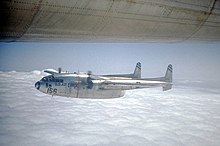
The 7th Airlift Squadron is part of the 62d Airlift Wing at McChord Air Force Base, Washington. It operates Boeing C-17 Globemaster III aircraft supporting the United States Air Force global reach mission worldwide.

The 728th Airlift Squadron is a United States Air Force Reserve squadron, assigned to the 446th Operations Group, stationed at McChord Field, Joint Base Lewis-McChord, Washington. It is an associate unit of the active duty 8th Airlift Squadron of the 62d Airlift Wing.

The 730th Air Mobility Training Squadron is an Air Force reserve unit stationed at Altus Air Force Base, Oklahoma, where it trains airmen on Boeing C-17 Globemaster III, Boeing KC-135 Stratotanker and Boeing KC-46 Pegasus aircraft systems. It is assigned to the 507th Operations Group at Tinker Air Force Base, Oklahoma, but performs its training mission under the direction of the 97th Air Mobility Wing of Air Education and Training Command.

The 758th Airlift Squadron is part of the 911th Airlift Wing at Pittsburgh International Airport, Pennsylvania. It operates the Boeing C-17 Globemaster III aircraft, providing global strategic airlift.

The 815th Airlift Squadron is a flying unit of the United States Air Force assigned to the Air Force Reserve Command and part of the 403d Wing at Keesler Air Force Base, Mississippi. It operates Lockheed C-130J Hercules aircraft providing global airlift.

The 128th Airborne Command and Control Squadron is a unit of the Georgia Air National Guard 116th Air Control Wing located at Robins Air Force Base, Georgia. The 128th is equipped with the E-8C Joint STARS.

The 315th Air Division is an inactive United States Air Force formation. Originally designated the 315th Bombardment Wing, it was activated in July 1944 at Peterson Field, Colorado as a command organization for four very heavy Boeing B-29 Superfortress bombardment groups. It supervised the 16th, 331st, 501st and 502nd Bombardment Groups in the Mariana Islands during the last stages of the Second World War. Its last assignment was with Pacific Air Forces, based at Tachikawa Air Base, Japan, where the division was inactivated in April 1969.

The 336th Air Refueling Squadron is a United States Air Force Reserve squadron, assigned to the 452d Operations Group, stationed at March Joint Air Reserve Base, California. The squadron shares its aircraft and facility with the 912th Air Refueling Squadron, a USAF Associate Unit assigned to the 92d Air Refueling Wing.

The 702d Expeditionary Airlift Squadron is a provisional United States Air Force unit. It is assigned to Air Combat Command to activate or inactivate as needed. It was active at Kandahar Airfield from 2011 to 2012.

The 780th Expeditionary Airlift Squadron is a provisional active United States Air Force unit. It is assigned to Air Mobility Command to activate or inactivate as needed for contingency operations.

The 781st Bombardment Squadron is an inactive United States Air Force unit. Its last assignment was to the 465th Bombardment Wing, stationed at Robins Air Force Base, Georgia. It was inactivated on 25 July 1968.

The 782d Troop Carrier Squadron is an inactive United States Air Force unit. The squadron was first activated in 1943 as the 782d Bombardment Squadron. After training in the United States, it served in combat in the Mediterranean Theater of Operations as a Consolidated B-24 Liberator unit in the strategic bombing campaign against Germany. It earned two Distinguished Unit Citations for its actions. After V-E Day, the squadron served in Air Transport Command, ferrying men from the combat theater back to the United States before inactivating.

The 772nd Expeditionary Airlift Squadron is a provisional United States Air Force unit, assigned to Air Combat Command to activate or inactivate as needed. Its most recent known deployment was with the 451st Air Expeditionary Wing at Kandahar Airfield, Afghanistan prior to the United States withdrawal from Afghanistan.

The United States Air Force's 463rd Operations Group was a tactical airlift unit last stationed at Dyess Air Force Base, Texas. It was inactivated on 1 October 1993.

The 774th Expeditionary Airlift Squadron is a provisional United States Air Force unit, assigned to the 455th Expeditionary Operations Group at Bagram Air Base, Afghanistan. The squadron provides airlift to forces engaged in the War in Afghanistan.

The 746th Expeditionary Airlift Squadron is a provisional United States Air Force unit. It is assigned to Air Combat Command to activate or inactivate as needed. Most recently, it operated Lockheed C-130 Hercules aircraft in theater airlift missions as part of the Global War on Terrorism.

The 738th Expeditionary Airlift Squadron is a provisional United States Air Force unit. It is assigned to Air Combat Command (ACC) to activate or inactivate as needed. It operates Lockheed C-130 Hercules aircraft in theater airlift missions as part of the Global War on Terrorism. Its current status and duty location is undetermined.

The 737th Expeditionary Airlift Squadron is a provisional United States Air Force unit assigned to Air Combat Command (ACC) to activate or inactivate as needed. It operates Lockheed C-130 Hercules aircraft in theater airlift missions as part of the Global War on Terrorism. Its current status and duty location is undetermined.

The 817th Expeditionary Airlift Squadron is a provisional United States Air Force unit, assigned to Air Mobility Command to activate or inactivate as needed. It engaged in combat operations in Southwest Asia.

The 483d Airlift Group is an inactive unit last assigned to Pacific Air Forces at Osan AB Korea. It was assigned to Twenty-Second Air Force as a VIP transport unit for Headquarters, Seventh Air Force. It was inactivated on 1 June 1992.

























